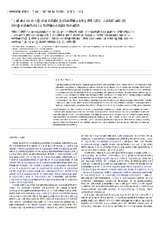Building an automatic pollen monitoring network (ePIN): Selection of optimal sites by clustering pollen stations
Autor
Oteros, José
Sofiev, Mikhail
Smith, Matt
Clot, Bernard
Damialis, Athanasios
Prank, Marje
Werchan, Matthias
Wachter, Reinhard
Weber, Alisa
Kutzora, Susanne
Heinze, Stefanie
Herr, Caroline
Menzel, Annette
Bergmann, Karl C.
Traidl-Hoffmann, Claudia
Schmidt-Weber, Carsten
Buters, Jeroen
Editor
ElsevierFecha
2019Materia
AerobiologyAir quality
Automatic pollen monitoring
BAA500
Biomonitoring network
Pollen
METS:
Mostrar el registro METSPREMIS:
Mostrar el registro PREMISMetadatos
Mostrar el registro completo del ítemResumen
Airborne pollen is a recognized biological indicator and its monitoring hasmultiple uses such as providing a tool
for allergy diagnosis and prevention. There is a knowledge gap related to the distribution of pollen traps needed
to achieve representative biomonitoring in a region. The aimof this manuscript is to suggest a method for setting
up a pollen network (monitoring method, monitoring conditions, number and location of samplers etc.). As a
case study, we describe the distribution of pollen across Bavaria and the design of the Bavarian pollenmonitoring
network (ePIN), the first operational automatic pollen network worldwide.
We established and ran a dense pollenmonitoring network of 27 manual Hirst-type pollen traps across Bavaria,
Germany, during 2015. Hierarchical cluster analysis of the datawas then performed to select the locations for the
sites of the final pollen monitoring network. According to our method, Bavaria can be clustered into three large pollen regions with eight zones. Within each zone, pollen diversity and distribution among different locations
does not vary significantly. Based on the pollen zones, we opted to place one automatic monitoring station per
zone resulting in the ePIN network, serving 13million inhabitants. The described method defines stations representative
for a homogeneous aeropalynologically region, which reduces redundancy within the network and
subsequent costs (in the study case from 27 to 8 locations). Following thismethod, resources in pollen monitoring
networks can be optimized and allergic citizens can then be informed in a timely and effective way, even in
larger geographical areas.

